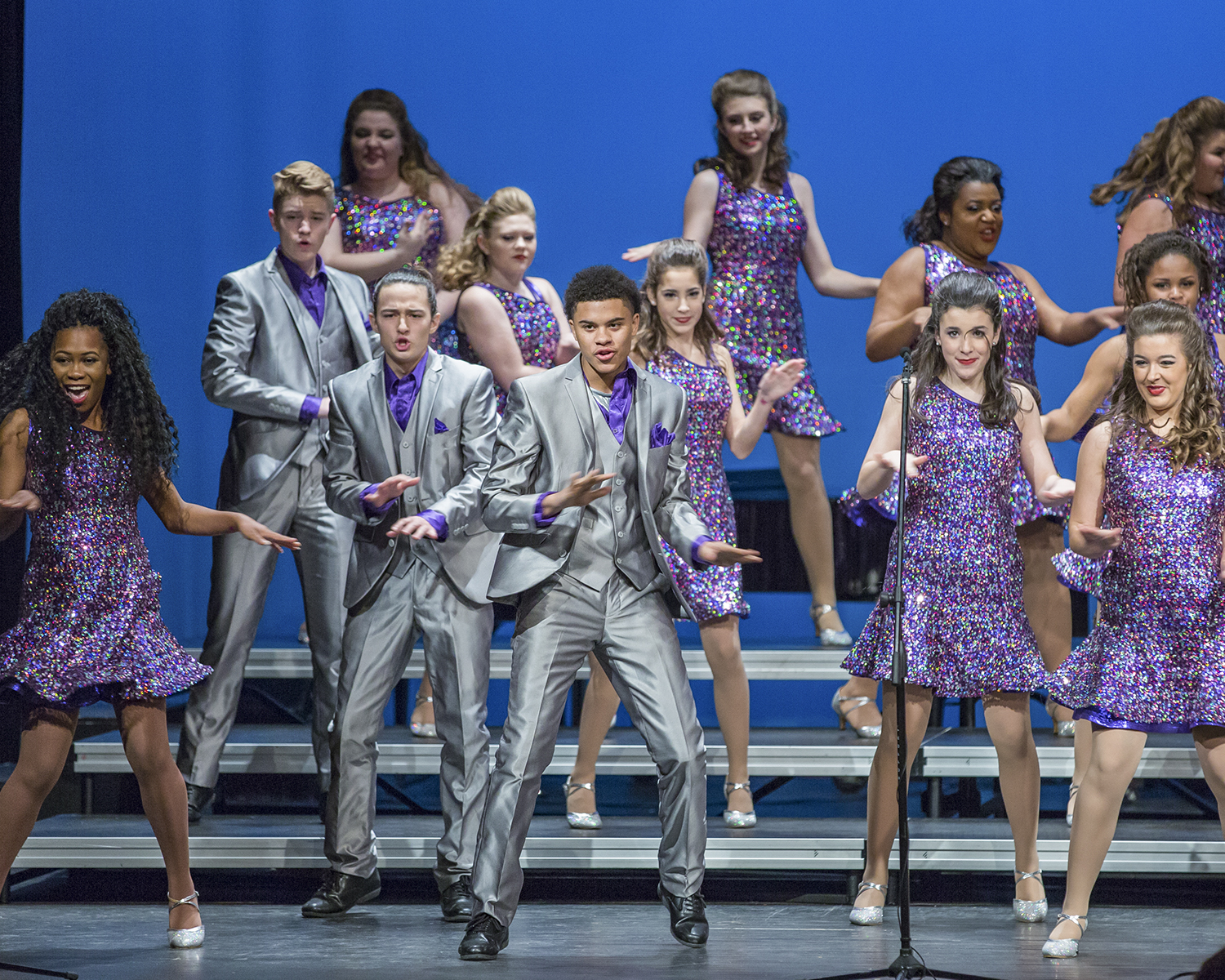
Mercedes Bergman owns Satin Stitches, a custom costume design and production company for dance and performance apparel. The shop’s founder, Deborah J. Nelson, “passed the baton” to Bergman in 2020. Having worked with Nelson as a designer, Bergman continues the company’s attention to detail and commitment to quality. The client base has expanded from dance teams and show choirs to include cheer teams, skaters, and people auditioning for many types of shows. In addition to creating custom designs, Satin Stitches hosts an online store offering budget-friendly styles and a wide choice of fabrics and colors
Bergman is drawn to the challenge of creating designs that are beautiful as well as functional. I interviewed her to learn more about her approach to show choir costuming.
First of all, Mercedes, thank you for your time and insights. Will you tell us a personal story that relates to show choir?
“I never had a chance to participate in show choir, but one of the fondest memories from my youth was the time I spent singing and dancing in a gospel youth choir. We toured the country performing, had elaborate costume changes, and even recorded a live album at the Fitzgerald Theater in St. Paul, Minnesota. I like to think that the hours of hard work, the exhilaration of a live performance, and the camaraderie it built along the way is not unlike the show choir experience!”
I was in show choir in high school and went to a few competitions. It definitely was a lot of fun! What have you seen change over the past ten years regarding costuming for show choir?
“I was just talking with Deborah Nelson about all the changes over the years! In the past, it was typical for show choirs to perform in formal attire—tuxedos for the guys and pretty stage dresses for the girls. Now custom-themed costumes have become common, especially for competitive show choirs looking to stand out from the crowd. We have also seen more inclusivity in creating designs that can accommodate different body types.”
Being able to customize really helps the performers look and feel good in their costumes. What should the director consider when choosing costumes?
“Look for stretch fabrics! Costumes that stretch will more easily accommodate a variety of body types, minimize the need for alterations, and allow for movement. Occasionally we create costumes using non-stretch fabrics, and in these instances we make every effort to include extra seam allowance wherever possible and design the garment in a way that allows for easy alterations.”
In my performance career, I often had to change costumes quickly. What are things to consider if the performer needs to change costumes during the show?
“Long back zippers are important so you can step into the costume without messing up hair & makeup! Velcro closures or hooks can be useful for garments that need a quick removal. Always test your prototype costume for functionality by performing your entire routine in the garment.”
Great suggestions! I especially like the zipper recommendation—it also makes it less likely to get makeup on your costume during a quick change. Budget is typically an issue the director deals with. What budgeting strategies would you suggest?
“You can get the most bang for your buck by mixing and matching pieces from different suppliers. Use your custom manufacturer for your unique and memorable pieces, but save the basics for a retailer that does larger stock quantities. We recently created an elaborate dress for one of our show choir clients, but the desired skirt had a lot of volume. Rather than building in an attached underskirt with layers and layers of tulle, we recommended that they purchase a separate petticoat from a retailer that specializes in petticoats. This saved our client money, and now they have petticoats that can be used again with another design!”
I love that you help your clients solve problems by referring them to a different retailer! I think that sort of generosity really enhances your business. Okay, costumes are made, the show is performed. How does the performer or director care for the costumes after the performance?
“Always follow the instructions on the care tag! For most of our costumes, we recommend spot cleaning only whenever possible to prolong the life of the garment; however, most of our costumes can be hand washed in cold. To reduce the risk of color bleed, never soak your costumes. Hang or lay flat to dry, and make sure the costume is fully dry before putting it away. Odor neutralizer sprays (such as Fresh Again for Uniform & Costume) can be used between washings. Some of our customers successfully dry clean their garments, but not all dry cleaners know how to properly clean costumes, so beware! Give the dry cleaner one garment to test launder before turning over all your costumes.”
This may seem an obvious question, but I want to ask anyway: How do costumes help tell the story of the show?
“Usually less is more… but for costumes, more is more. A colleague said this to me when I was new to the costume design world, and I think of it often. The audience wants to be transported and dazzled… costumes are so important to make that happen!”
Be transported and dazzled! Thank you so much, Mercedes.











